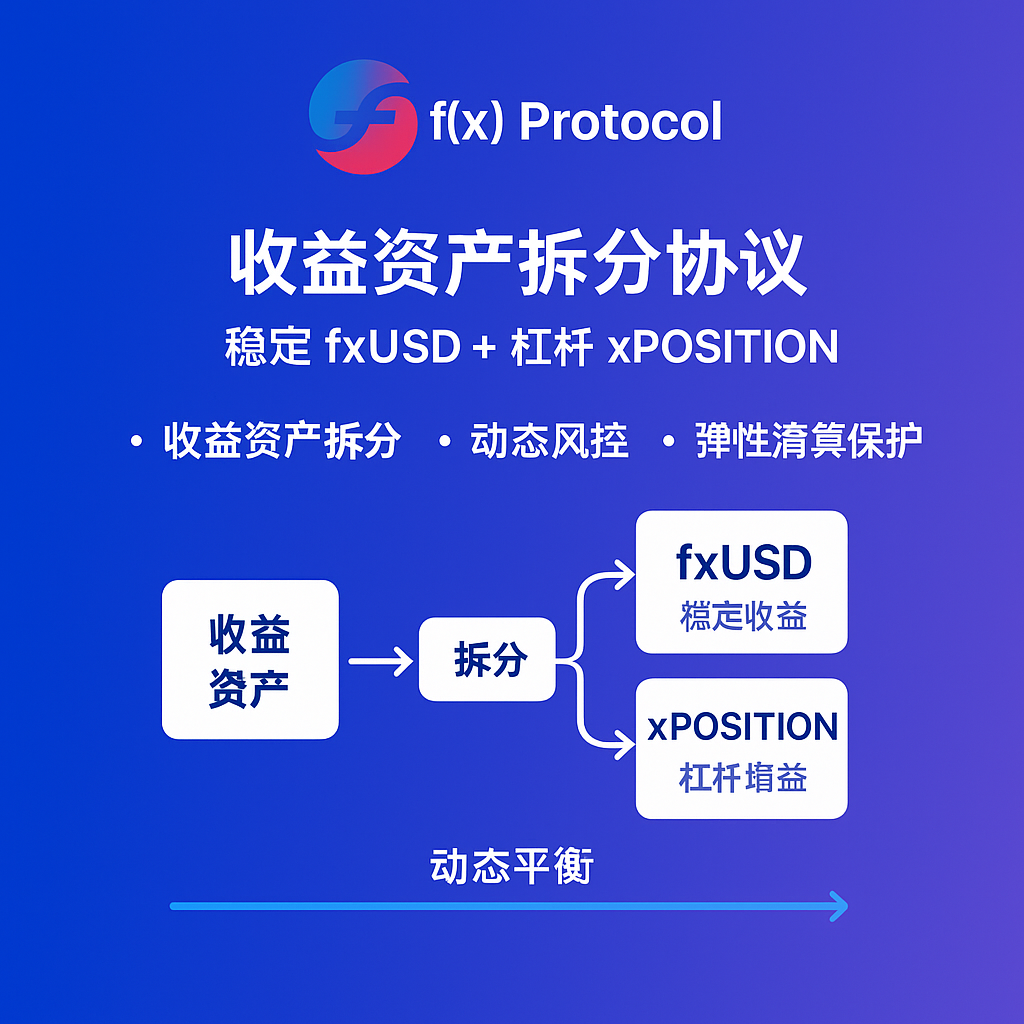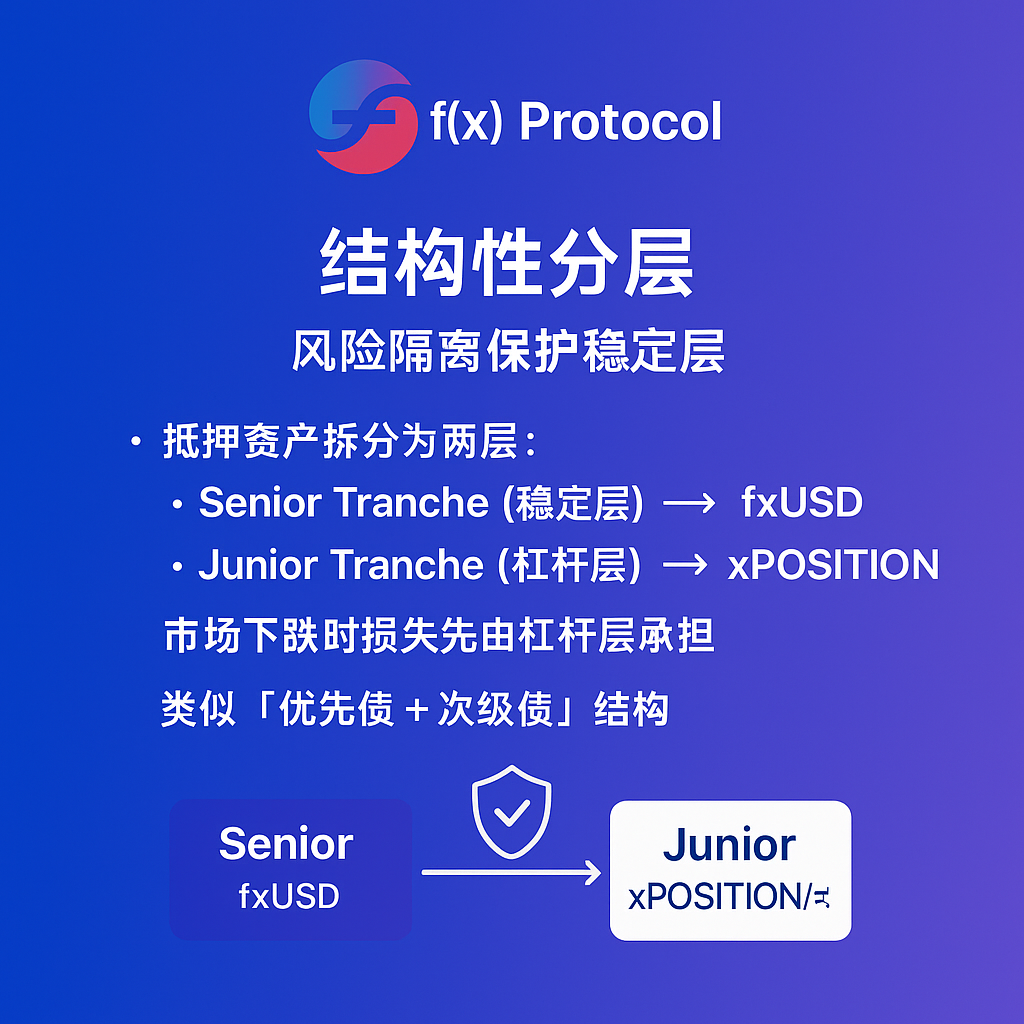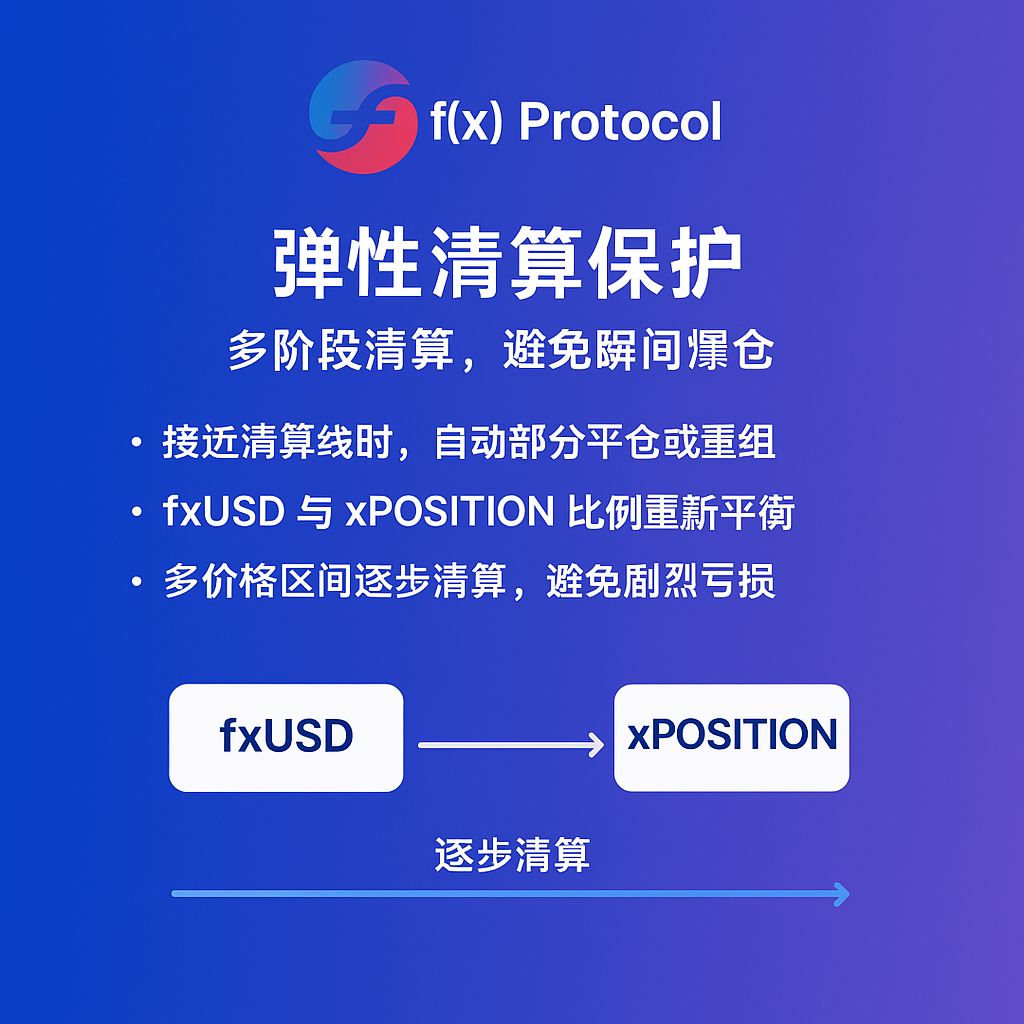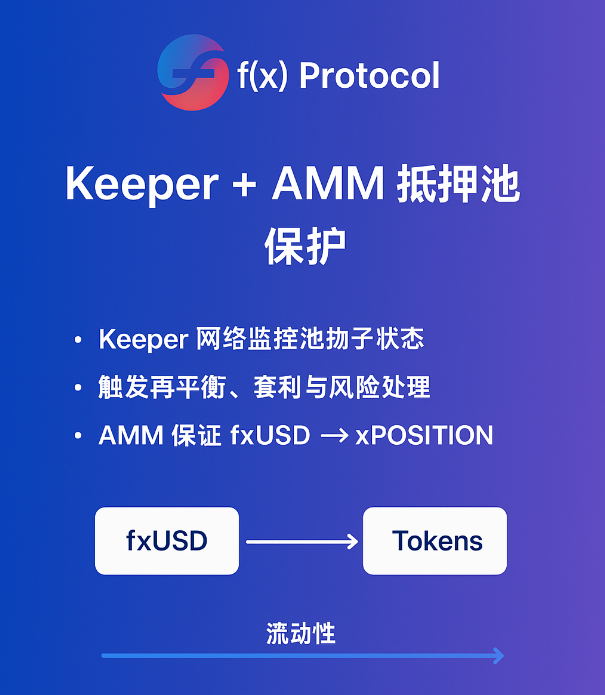Recently, many friends have asked me how f(x) can achieve anti-liquidation and protect against leveraged liquidation. Today, this article will clarify these two questions at once.
The income-generating assets are split into low-risk $fxUSD stablecoins and high-risk xPOSITION leveraged tokens, automatically and dynamically balancing risk and return, protecting the stable layer, and optimizing neutral and conservative strategy configurations. A new choice for stable DeFi returns: how f(x) Protocol balances safety and leveraged gains.
Core advantages: Stablecoin part has low volatility, sustainable returns, clear risk layering, and robust design, suitable for neutral or conservative capital allocation.
f(x) Protocol splits an income-generating asset (such as stETH) into two types of tokens:
fxUSD (stablecoin layer, low risk)
The system algorithmically adjusts the value ratio of the two in real-time, automatically buffering liquidation risk during market downturns, achieving "layered income assets + dynamic risk control."
Structural Layering (Risk Tranching) User's collateral assets are split into two layers:

Senior Tranche (stable layer) → fxUSD Junior Tranche (leveraged layer) → xPOSITION/xETH In a market downturn, losses are primarily borne by the Junior layer, ensuring fxUSD holders do not face liquidation. Leveraged risk is absorbed in the lower layer, similar to the "senior debt + subordinated debt" structure in traditional finance. This clarifies risk layering, allowing low-risk investors to hold with peace of mind.
Dynamic Price Rebalancing (Auto-Rebalancing)

Real-time tracking of underlying asset prices (such as ETH). When price fluctuations exceed a threshold, automatic rebalancing occurs: ETH drops → xETH leverage ratio is automatically reduced ETH rises → the system gradually increases leverage exposure This avoids the risk of a single liquidation line causing a cascade of liquidations, smoothing the distribution of gains and losses, similar to a MakerDAO + AMM fusion mechanism.
Built-in Liquidation Protection Threshold (Soft Liquidation / Elastic Liquidation)

There is no instant liquidation mechanism. When the net value of xPOSITION approaches the collateral critical line: The system partially liquidates or reissues fxUSD and xPOSITION to restore balance. Advantage: Avoids severe losses caused by one-time liquidation, with the liquidation process completed across multiple price ranges.
Keeper + AMM Collateral Pool Protection

The Keeper network monitors the pool's status, triggering rebalancing or arbitrage. The AMM mechanism ensures sustainable liquidity between fxUSD and xPOSITION. In extreme market conditions (e.g., ETH drops 40%), priority is given to handling risk positions to avoid a chain reaction of liquidations.
Example: Suppose ETH drops 20%, and xETH is opened with 3x leverage. If the price approaches liquidation, the system automatically reduces leverage, keeping fxUSD pegged at 1:1 with the dollar. Profits/losses are automatically distributed, preventing a chain reaction.
f(x) Protocol provides stable returns and leveraged gains through asset splitting, dynamic risk control, and elastic liquidation, while reducing overall system risk. It meets the needs of neutral and conservative strategy configurations, ensuring safety for stablecoin holders and flexibility for leveraged investors pursuing returns. $fxusd $FXN #stETH
Portal https://fx.aladdin.club/v2/earn/?code=FXclzm88
免责声明:本文章仅代表作者个人观点,不代表本平台的立场和观点。本文章仅供信息分享,不构成对任何人的任何投资建议。用户与作者之间的任何争议,与本平台无关。如网页中刊载的文章或图片涉及侵权,请提供相关的权利证明和身份证明发送邮件到support@aicoin.com,本平台相关工作人员将会进行核查。



